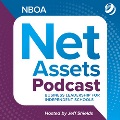Aug 7, 2020, 4:20 PM
(From Inside Higher Ed) As economic activity slowly rebounds from the pandemic, the need to manage discretionary spending will be all the more paramount for independent schools. A new guide from Inside Higher Ed on “Finding Efficiencies in Managing Expenses” is now available to help schools develop strategies for enrollment in uncertain times while controlling costs. Some of the topics addressed include:
Download a free copy from Inside Higher Ed
(From The 74 Million) The United Federation of Teachers has launched its own investigation of building air quality in New York City schools following complaints from teachers of substandard air quality. Less than half of New York City’s roughly 1,400 school buildings are equipped with heating, ventilation and air conditioning systems, but the issue is not restricted to large urban districts. According to Harvard’s School of Public Health, 90 percent of American schools are under-ventilated. “One of the biggest risk factors is time spent in under-ventilated spaces indoors. You want to control the emissions and removal,” said Harvard’s Joseph Allen.
(From The Washington Post) Congressional Democrats have introduced new legislation that would make reducing racial inequality in the U.S. economy an official part of the Federal Reserve’s mission. The legislation would require the Fed chair to discuss disparities in income, wealth and employment, as well as what the Fed is doing to reduce and eliminate those disparities. While the legislation is not expected to pass Congress, it signals a growing understanding among Democrats that the Fed has played a role in deepening inequality and needs to be part of the solution to close gaps in employment and pay.

Listen to the latest episode of the Net Assets podcast.